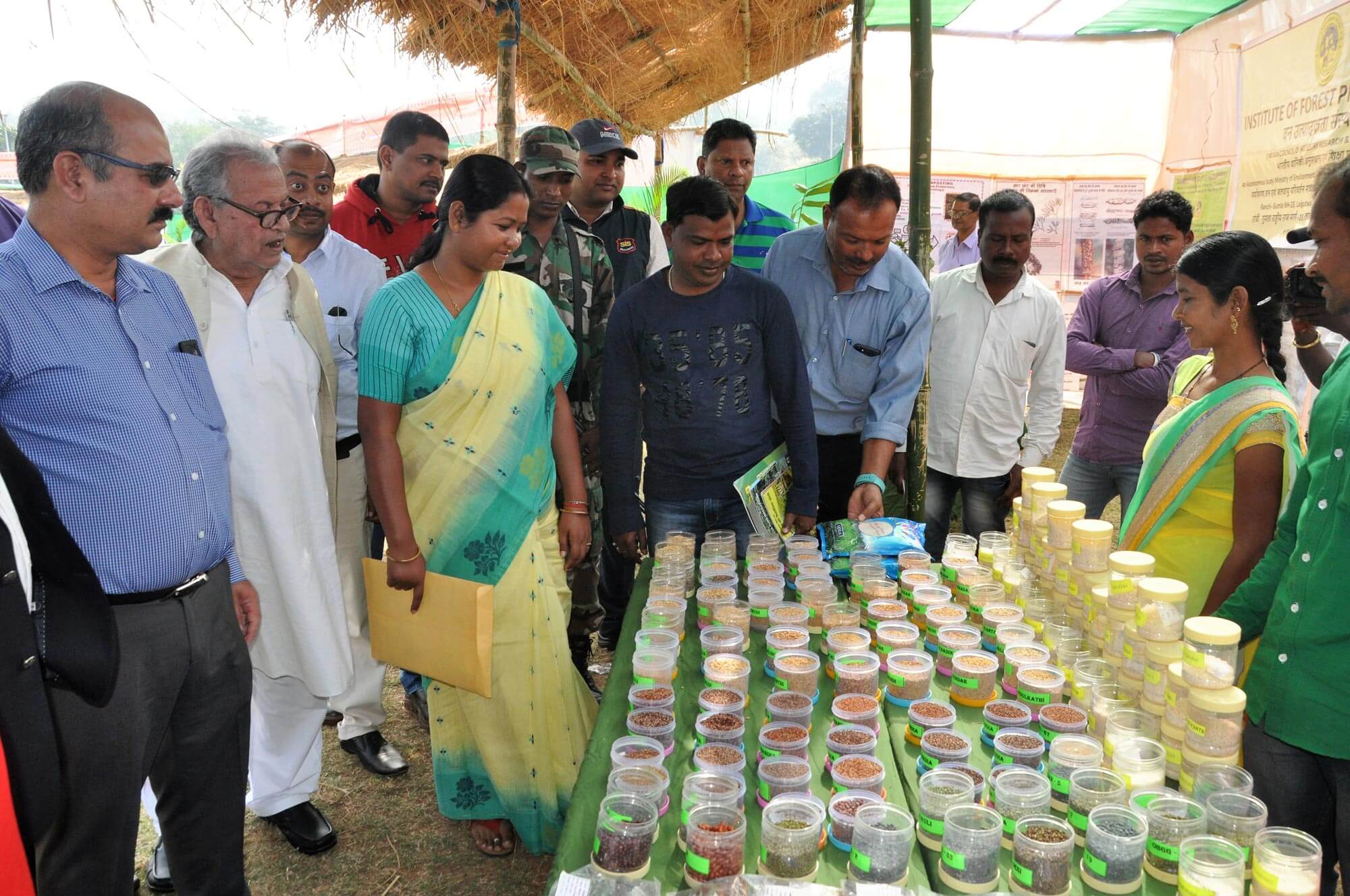Tata Steel's OMQ Division celebrates agro forest food diversity
- The fest titled Prajatiya Khaydyotsav witnessed a footfall of 5000 people including school children.
- 110 varieties of tribal food showcased during the agro forest food diversity fest at Noamundi.
 To celebrate and appreciate the ethnicity of the tribal communities in and around its areas of operation, Tata Steel’s Ore Mines & Quarries(OMQ) Division organised a grand agro forest food diversity fest “Prajatiya Khadyotsav” at Sport Complex, Noamundi today.
To celebrate and appreciate the ethnicity of the tribal communities in and around its areas of operation, Tata Steel’s Ore Mines & Quarries(OMQ) Division organised a grand agro forest food diversity fest “Prajatiya Khadyotsav” at Sport Complex, Noamundi today.
The event portrayed different aspects of tribal life from ethnic wear to cooking to daily lifestyle to celebration of different festivals by the tribal communities. A total of 70 Self Help Groups showcased 110 varieties of tribal food in the fest.
Ms Geeta Koda, MLA, Jagannathpur gracing the occasion as Chief Guest said:“ The sports complex has been converted into a big tribal kitchen today and it’s all looking beautiful. I am thankful to Tata Steel for providing such a platform to the tribal communities of this region.”

Addressing the gathering on this occasion, Mr Pankaj Satija, General Manager (OMQ), Tata Steel said: “I am happy to see the footfall and participation of school children in the fest today. This event is one of our efforts to contribute to the National Biodiversity Target 1 and 11 which talks about biodiversity awareness to youth and strengthening of communities traditional knowledge on biodiversity respectively."
From agro forest produce to display of tribal products to an array of mouthwatering tribal food like biri daal, saag pakora, spicy kurkuti chutni with kurut kunda and sweet dishes like mahua laddo and suji kakar, kept pulling people to the stalls.
Other guests present on the occasion included Dr Kartik Charan Lenka, Scientist, M S Swaminathan Research Foundation, Koraput, Odisha; Ms Archana Relan, Founder, Miraculous Millets, Bhopal, Uttar Pradesh, Dr Krishna Prasad, Assistant Professor, Birsa Agriculture University, Ranchi; Mr S N Vaidya, Research Officer, Institute of Forest Productivity ICFRE, Ranchi; Mr P Patmajhi, Senior Technical Officer, Indian Institute of Natural Resins & Gums, Ranchi and Mr Samaresh Bhandari, Block Development Officer, Noamundi.
About Tata Steel
Tata Steel Group is among the top global steel companies with an annual crude steel capacity of 27.5 million tonnes per annum (MTPA) as on March 31, 2017. It is the world's second-most geographically-diversified steel producer, with operations in 26 countries and a commercial presence in over 50 countries. The Group recorded a consolidated turnover of US $18.12 billion (INR 117,420 crore) in FY17. Tata Steel Group is spread across five continents with an employee base of nearly 74,000. Having bagged the Deming Application Prize and Deming Grand Prize for continuous improvement in 2008 and 2012 respectively, Tata Steel has now been recognised as the global ‘Industry Leader’ in ‘Steel category’ by Dow Jones Sustainability Index (2015). Besides being a member of the World Steel Climate Action Programme, Tata Steel has also been felicitated with several awards including the Prime Minister’s Trophy for the best performing integrated steel plant for 2013-14 (received in 2017), Best Risk Management by CNBC TV18 (2016), ‘Best-in-class Manufacturing’ award from TIME India (2016) and the ‘Most Ethical Company’ award from the Ethisphere Institute (2016), IIM Sustainability Award (2015), among several others.
Disclaimer
Statements in this press release describing the Company’s performance may be “forward looking statements” within the meaning of applicable securities laws and regulations. Actual results may differ materially from those directly or indirectly expressed, inferred or implied. Important factors that could make a difference to the Company’s operations include, among others, economic conditions affecting demand/ supply and price conditions in the domestic and overseas markets in which the Company operates, changes in or due to the environment, Government regulations, laws, statutes, judicial pronouncements and/ or other incidental factors.









